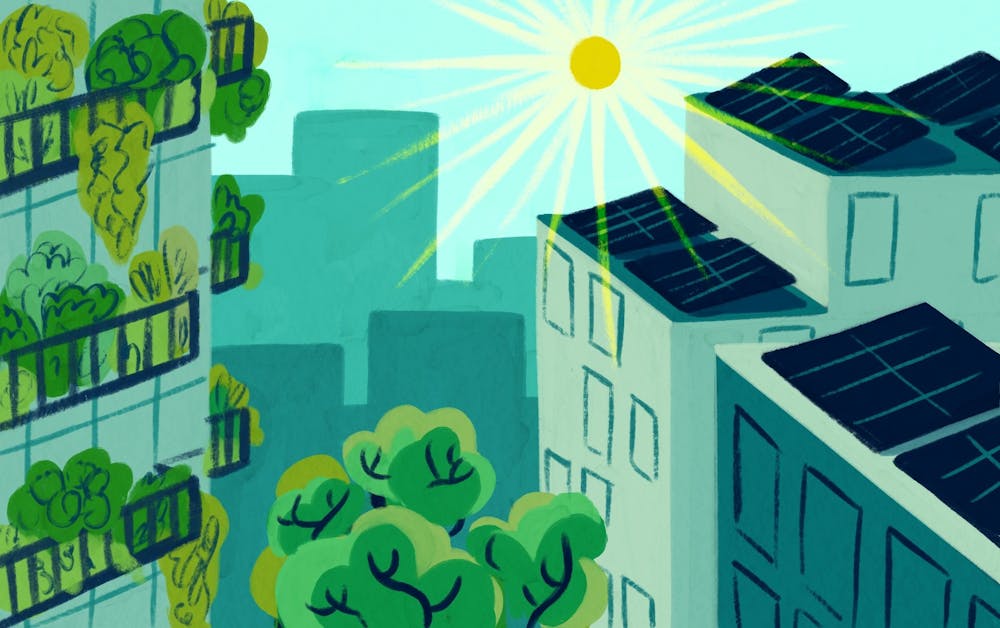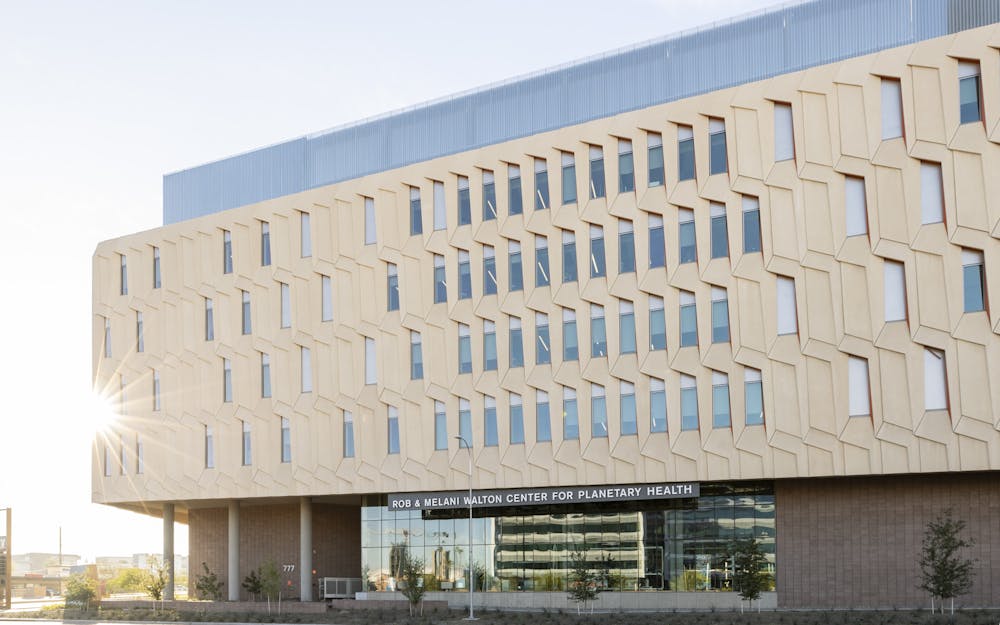In 2023, ASU was ranked number one in the United States and second in the world for its sustainability practices.
The University's end goal, according to ASU’s Executive Director of Sustainability Practices Marc Campbell, is to become a model for a “fully sustainable university.” However, what does this entail, and what progress has ASU made in living up to its objectives?
The ranking that placed ASU at number one was produced by The Association for the Advancement of Sustainability in Higher Education using their Sustainability Tracking, Assessment & Rating System.
The STARS measurements are based on five main categories: academics, engagement, operations, planning and administration, and innovation and leadership.
Within this study, ASU placed higher than top research facilities like Stanford and UC Berkeley, whose most recent scores have been within the 85 range. In 2023, ASU scored 91.10 out of 100 points, giving it the platinum label. Only 11 other universities hold that title.
One significant advancement made by the University this year came in the form of hosting its first now-annual Carbon Summit in November. At the graduate student-led initiative, solutions, research and projects were suggested to help improve the University’s consumption and waste.
The event was created by Jason Marmon, a 36-year-old who started the program at two higher education institutions in Idaho. At the event, Campbell gave a speech he called the “ASU State of Sustainability.” He used this opportunity to explain ASU's current rankings but also discussed that though ASU is considered one of the most sustainable institutions in the world, there are still some factors in need of improvement.
“We are making good progress in some of our comprehensive sustainability goals, and we are stagnating in others. We have all of the ingredients here for a fully embedded culture of sustainability, but they need to be mixed and fully baked,” Campbell said. “Sustainability is a journey, it's not an endpoint, and like all high achieving organizations, there's still more for us to do.”
Campbell described current sustainability practices at ASU by comparing them to traffic lights. Green was reserved for things ASU excels at, yellow for things that need improvement and red for things that ASU will be working to implement and fix in the upcoming year. The green light of approval was awarded to the University's transition to electric vehicles, yellow to its energy usage and circular resources, and red to its water optimization efforts.
Campbell's analysis of ASU's sustainability accomplishments shares similarities with AASHE's STARS report on the University. Most of the points ASU lost in the STARS ratings were related to daily operations, with the biggest deficits being in food and beverage purchasing and building operations and maintenance.
ASU also received a perfect score in the research section of academics; comparatively, UC Berkeley missed a point and Stanford almost missed two. ASU's closest competitor in the U.S. was UC Irvine, which scored 88.8 overall and also received a perfect score for research.
Campbell said, ASU President Michael Crow has aimed toward becoming a sustainable University and making global impacts as a research institution for a long time.
“Dr. Crow’s expectation of this University and of our culture is that we push this and we continue to advance,” Campbell said. “It’s going to take significant investments and it’s going to take significant energy from all of us and people on campus to stay (ranked number one).”
Crow expressed his desire for the University to act “heroically” in sustainability efforts during a 2023 meeting of the Global Sustainable Development Congress.
“The pace of our sustainability crisis is accelerating," Crow wrote in a LinkedIn post following the event. "Higher education needs to move faster, work collaboratively, and think creatively to find answers to this emergency.”
As part of this effort, Crow established the Rob and Melani Walton Center for Planetary Health back in 2022. This center focuses on global and local efforts in sustainability and innovation, as well as acts as an event space to further public outreach.
“ASU has built the infrastructure to lead a revolution in sustainability and conservation that will benefit planetary health in ways we can’t even imagine,” said Rob Walton, co-founder of the Rob and Melani Walton Foundation. “We're excited about this building, inside and out, from its sustainable design to the work that it will house.”
This building additionally housed the Carbon Summit. Marmon expressed that he wanted to use the event as an opportunity to showcase the solutions ASU has already implemented or could implement.
“It’s really about framing the problems in a way that we can digest, and we can understand and take action on,” Marmon said. “I’m really trying to be the change I wish to see.”
The event served as a “discovery marketplace,” not only showcasing the University's current sustainability practices but also serving as a platform for the University to discuss new solutions.
“It's thinking about: how can we make a future for everyone? How can I make the future more equitable, more sustainable?” said Eusebio Scornavacca, interim director and professor for the School for the Future of Innovation in Society at ASU. “Going beyond performance and thinking about outcomes.”
This year’s Carbon Summit allowed for about 27 speakers ranging from keynotes to panelists, with the event broken into two days. The first day focused on food systems and energy transitions, whereas the second day largely focused on circular economies, climate adaptation and sustainability as a whole.
In addition to showcasing others’ sustainability solutions, the event also served as a way for Marmon to showcase his main two ideas in furthering student action on campus.
One involves working to establish a student-run Carbon Council, which will continue the work he has started and allow students to act as green liaisons on campus. Additionally, he helped start the Climate Action Fund, which allows donations to go toward events, scholarships and grants that will help support creative solutions to advance sustainability.
“You know, we have to dream together. Dreams serve social and emotional adaptive functions. They’re the most powerful thing we have when you talk about optimism,” Marmon said. “If we dream together, there is nothing we can’t do.”
Edited by River Graziano, Sadie Buggle and Angelina Steel.
Reach the reporter at aheichma@asu.edu and follow @alexis_heichman on X.
Like The State Press on Facebook and follow @statepress on X.
Alexis is a senior studying journalism and mass communication with a minor in psychology. This is her fifth semester with The State Press. She is also a marketing intern at Make-A-Wish Arizona.





